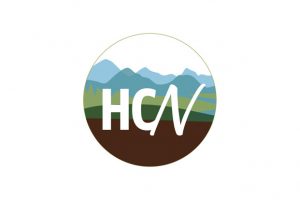WHAT IS A NEUROPATHY?
Firstly, let’s start with pain. Pain is a very generic term with many causes, many descriptors and can be perceived differently by everyone. There are three phases of pain: “Immediate pain” is the sudden source of pain we feel when our body senses a threat, for example if we touch a hot stove. “Acute pain” is when there is trauma to our body and inflammation is sent to the area. Inflammation is a vital part of our immune system and can initiate healing chemical changes to our body such as histamines and prostaglandins. There may be redness, swelling and pain in the area, but this helps us to avoid further damage and rest. The third stage is “Chronic pain”. Chronic pain becomes more complex as it is described as having pain and ongoing inflammation in the absence of further damage to the tissues. This stage may involve a disease process, a psychogenic disorder (emotional or mental stress), or be the result of “neurogenic pain” – pain that originates in the spinal cord or the peripheral nerve roots.
A neuropathy is when the nerves in our body become damaged and hypersensitive due to disease or injury. Nerves branch off the spinal cord and nourish all the structures in our body – muscles, bones, ligaments, skin, and organs (heart, lungs liver, kidney, intestines, stomache, skin). These nerves can be damaged by a variety of factors, such as an infection, metabolic conditions (ie. Diabetes), trauma, toxins or degenerative conditions such as a spondylosis/ osteoarthritis in the spine. This is the most common cause of a peripheral neuropathy. When the discs and joints in our spine are damaged, the tunnels the nerves run through begin to narrow and put pressure on the nerve root. The nerve becomes hypersensitive and over time, normal stimuli become irritable and painful (your shoulder starts to ache simply doing the dishes). The nerve and all the structures it innervates may be a source of pain.
The most common areas of joint degeneration (spondylosis and osteoarthritis) in the spine are at the levels of C5/6, L2/3 and L5/S1. The C5/6 nerve roots in the neck supply the shoulder and elbow areas ,the L2/3 nerve roots in the lower back supply the hip/thigh/knee area, and the L5/S1 nerve roots supply the back of the leg and foot. This nerve damage that originates in the spine, can manifest itself as an isolated issue down the limb (ie. Rotator cuff tendonitis, tennis elbow, knee pain, plantar fasciitis). Furthermore, these nerve roots are also responsible for our sensation (pins and needles, burning), our muscle function, autonomic functions in our body such as sweating, goosebumps and arterial function as well as the health of our skin, hair and nails. That is a big job for those nerve roots! Why this is relevant is because you may experience one or more of these changes happening but not attribute them to the same origin. For example, you may have nail bed changes, plantar fasciitis, hair loss along your calf and a history of intermittent back pain. The L5-S1 nerve root is the likely culprit!
Typical characteristics of neuropathic pain are you may be experiencing pain without any mechanism of injury, there may be a delay in pain onset after an injury, normal stimuli causes pain, there is brief/shooting pain, deep aching or burning type pain and symptoms may be worse after treatment or exercise. If this sounds familiar to you, you may be experiencing neuropathic pain that is originating at some level of your spine.
It is integral to investigate your whole body – spine and limbs – and evaluate how you stand and move in multi-directions. More often than not where you are experiencing pain is not where the original problem lies!
Treatment must address both the origin of the issue and the local problem. Muscle flexibility, muscle function, posture and gait patterns are evaluated. It is integral to assess and palpate along the whole spine to understand where compensations are occurring. Treatment may involve postural education, manual therapy, acupuncture or intramuscular stimulation techniques and exercise education.
How true that Dry Bones song rings when we put it all together! The shoulder bone connected to the neck bone…Dem bones, Dem bones gonna walk around…
Jennifer Gordon
BSc. PT, GunnIMS, AFCI
Bragg Creek Physiotherapy
www.braggcreekphysio.com

























